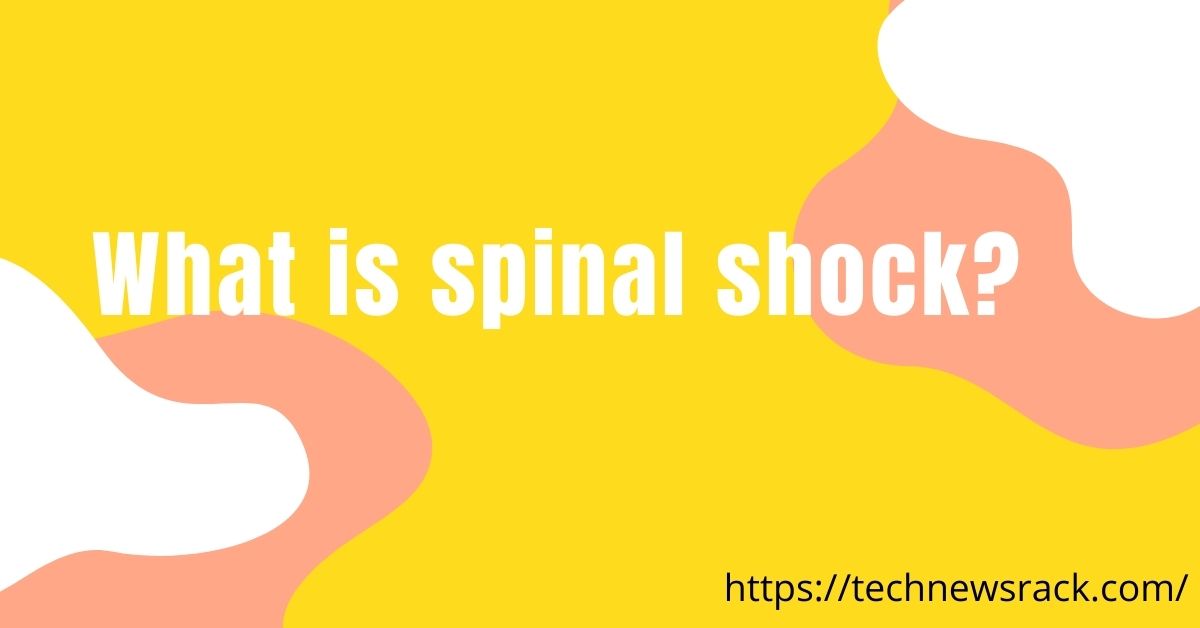Have you ever heard the word “spinal shock”? well, if not, then you may undoubtedly be thinking that what is spinal shock? The term “spinal shock” refers to all physiological or anatomical transections of the backbone which cause temporary loss or depression of all or most reflexes below the injury stage. Depending on the level of this shock, hypotension attributable to lack of sympathetic tone can be complicated.
The injury process causing the spinal shock is always traumatic and happens instantly, but the spinal shock has been identified with many hourly injury mechanics. The restoration of qualified irregular cutaneous or muscular spindle reflex arcs marks the spinal cord wound’s spinal shock process. Autonomous reflex arcs with a relay to secondary neurons outside the backbone can vary during the spine and return variable following the spinal shock abatements. The spinal cord reflex’s returned arcs under the injury threshold are irrevocably altered and form the foundation of regeneration.
Some differential diagnoses of spinal shock include,
- Vertebral fracture
- Spinal abscess
- Sepsis
- Cardiogenic shock
How Long Does Spinal Shock Last?
Now the question is that how long does spinal shock last? The spinal shock typically lasts for 4-12 weeks following a backbone fracture. The spinal shock has been terminated quicker and faster in partial lesions; the pyramidal and defensive responses occur more than incomplete transverse lesions. It is contentious to identify clinical signs which decide the length of a spinal shock.
What Causes Spinal Shock?
After getting knowledge about “what is spinal shock?” a question arises: What causes spinal shock? The spinal shock is a consequence of severe damage to the backbone. In general, it requires high-impact, direct trauma, resulting in damage to the spinal cord. The first experience with a spinal shock patient usually is traumatic.
you can get read more : Top Suggested Anti-Aging Lifestyle Habits for Skin That Glows
Spinal Shock Symptoms:

Here, we will mention some of the spinal shock symptoms, but which of the following describes shock the following injury? Well, that varies from case to case. So, below are some signs of spinal shock,
- Extreme back, spine, and head pressure
- Weakness, inconsistency, or paralysis somewhere in the body
- Tingling of the hands, fingertips, or toes or lack of feeling
- Loss in the regulation of the bladder
- Balancing and walking difficulties
- Breathing impairment after injuries
- A bizarrely placed or bent neck or back
Why Does Spinal Shock Occur?
After knowing about spinal shock symptoms, we should tell you about “why does spinal shock occur” The relative value of various pathologies leading to a spinal shock is not certain. However, the significant descending factors tend to have been reticulospinal and vestibulospinal—the spinal shock results from a lack of natural facilitation. Several electrophysiological experiments with findings of presynaptic inhibition have reported super spinal segmental inhibition during spinal shock.
What Are the Treatments of Spinal Shock?
It is necessary to treat the causes of hypotension. Injuries in the chest or abdomen may cause hemorrhage. Restoration fluid is essential. The hypotension is often reversed with crystalloid. Oxygenation and bradycardia control of atropine should be maintained. The performance should be tracked. Low-dose dopamine can be used in some patients.
Patients with spinal shock must be managed in an ICU environment since several complications are related to an injury. The treatment of methylprednisone is problematic in some studies with moderate benefit and certain other studies with adverse side effects. We suggest a brief test of methylprednisone beginning with a loading dose of 30 mg/kg over the next 24 hours, whether the patient is young and may not have any chronic disorders aggravated by steroid use. The initial care should include norepinephrine drip and wisely applying atropine to bradycardia. Finally, the intravenous (IV) drips can be reduced progressively in a few days.
Also read more : 6 Foods For Weight Loss That Can Help You
Conclusion:
The polysynaptic skin reflexes such as delayed plant reaction, bulbocavernosus reflex, and cremaster reflex rather than monosynaptic deep tendon reflexes are at first noticeable. These distinctions are more apparent. The polysynaptic skin reflection seems to obtain less supraspinal support and less disruptive synaptic regions, as descending paths contribute less well. When a spinal shock is characterized as the absence of every reflex, it is possible to restore the concept of a spinal shock since a reflex seldom does not exist except in cases of full wounds. It may also be reconsidered the vision of the reflex return’s spinal shock in a caudal to rostral series. A more precise classification can be distinguished by a phase in which the dermal or deep tendon reflexes’ appearance has been altered, and pathologic reflections have occurred over days and weeks and have often disappeared.



